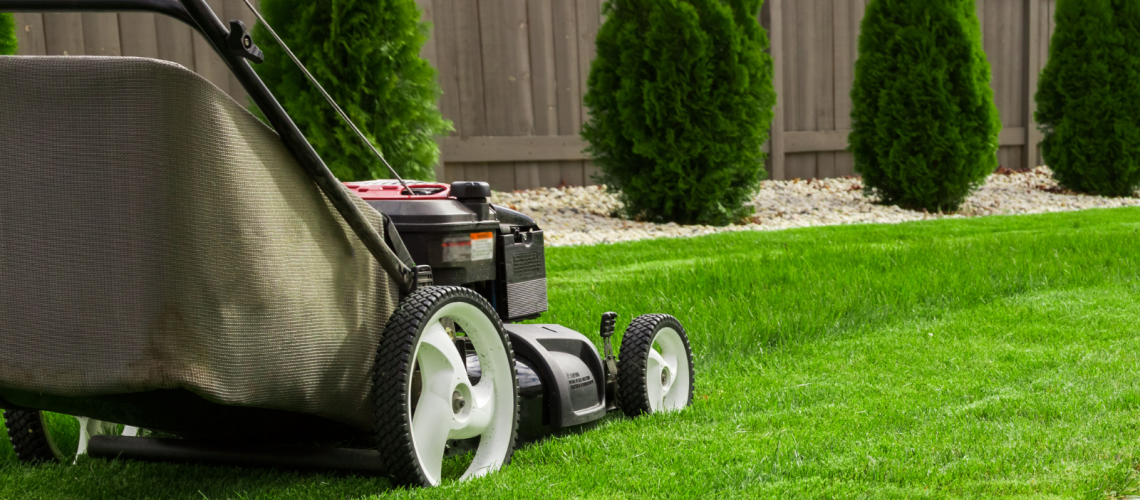We teamed up with our friends at Texas A&M AgriLife to bring you a comprehensive guide for keeping your lawn lush and healthy during harsh North Texas summers. Lawn care doesn’t have to be hard or resource intensive, even with our demanding summer conditions. Check out our simple and smart list of tips to have the greenest yard on the block. We even included links to helpful resources, like St. Augustine and Bermuda Calendars so you can know exactly when to maintain your turfgrass.
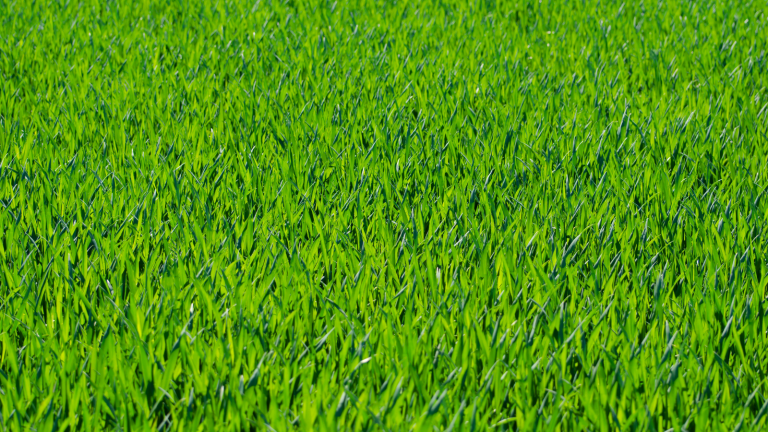
Information in this guide was reprinted with permission from Texas A&M AgriLife Extension Service. Texas AgriLife are turfgrass and lawn care experts who conduct cutting edge turfgrass research, exclusively grown in Texas climates.
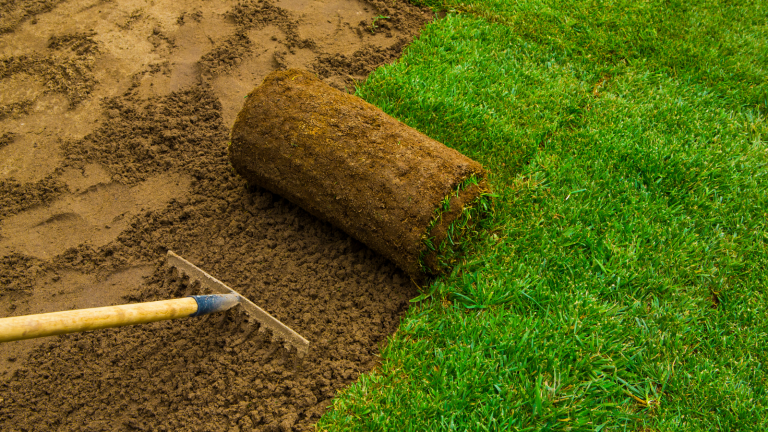
The most common turfgrasses used in North Texas lawns are St. Augustine, Bermuda, Zoysia, and Buffalograss. This guide is focused more on care for St. Augustine and Bermuda grasses because they are more sensitive than the other two and require more care during the heat of the summer. In general, St. Augustine is the most resource intensive grass, Bermuda and Zoysia are in the middle, and native Buffalograss is least resource intensive.
Mowing
Summer is prime mowing season for warm-season grasses. It’s a regular part of turfgrass maintenance, but it is also a stress. How you mow can have a big impact on the overall health of your turfgrass.
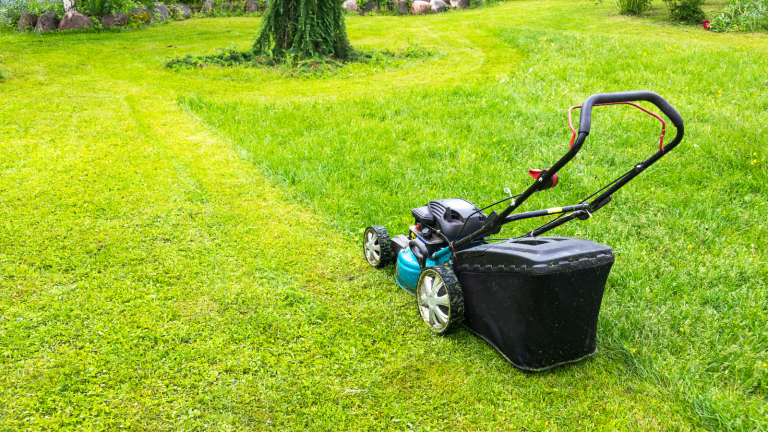
Mowing height is determined by your species of grass, and how often you want to mow. Taller grass may shade out weeds and will promote a deeper, healthier root system. There is a direct relationship between your shoots (leaves) and your roots. This is often referred to as the “Root-to-Shoot Ratio”. A higher mowing height = deeper roots. Deeper roots = reaching water and nutrients that are deeper in the soil. It also means that you will improve your overall water infiltration. If you choose a higher mowing height, work to stay within the recommended height range for your particular species and variety of grass.
Your mowing frequency will primarily be determined by one thing: The 1/3 Rule. The 1/3 Rule is simple: Never remove more than 1/3 of your total grass height at one time. Doing so will stress your turfgrass. Removing too much tissue at one time is referred to as scalping. Scalped turfgrass is injured turfgrass. It will become extremely sensitive to drought and heat stress, and is more vulnerable to pests including weeds, diseases, and insects. Grass will grow at variable rates depending on water, fertilization, and temperature changes throughout the season. Depending on species, you may need to mow every 4-7 days in the summer, taking care to follow the 1/3 Rule. If you keep your grass at a shorter height, you will need to mow more frequently.
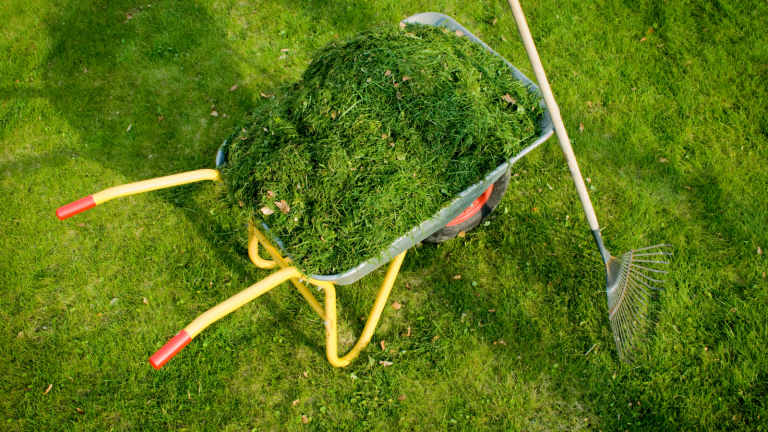
Returning clippings to the lawn can potentially reduce your nitrogen fertilizer requirements by between 25 and 50%. Mulching your clippings, as opposed to bagging them, can recycle these nutrients and provide good organic material for your soil. If you mulch your clippings, take care to rake them so that they are even across the area. Heavy piles or lines can damage the turf and cause problems down the road. Mowing in a different direction each time will also help prevent problems.
To find mowing heights for a wider range of grass types and more detailed mowing information, check out AgriLife’s Mowing Recommendations for Warm-Season Turfgrasses publication.
Watering
Watering becomes one of the biggest issues for turfgrass lawns, fields, and park spaces throughout the summer. Pay attention to municipal water restrictions. Water early in the morning to optimize what your plant can use. Try not to water in the evenings, as sometimes this can leave the grass too wet overnight, inviting disease. Different species have different degrees of drought tolerance and may require more or less water. Likewise, some varieties may be more drought tolerance than other varieties of the same species. Visit the AggieTurf website for more information of different turfgrass species.
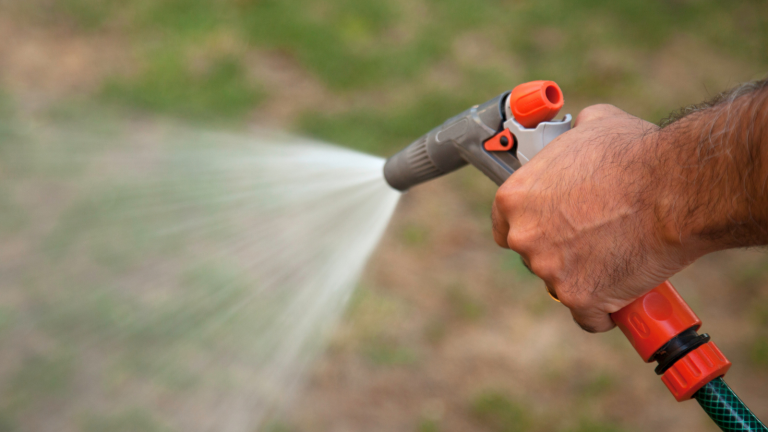
Remember to water deeply and infrequently. To determine how long you need to water you will need to determine your sprinkler precipitation rate. Spread your watering over two mornings per week. Try to make sure that when you water, it is reaching a depth of 6” uniformly across the area. This may mean getting a trowel out and digging around. If you’re noticing some inconsistency in water stress (patches that seem thirstier than others), it may mean that your irrigation system is malfunctioning in some way. Consider a catch can audit to check your system and determine your sprinkler precipitation rate.
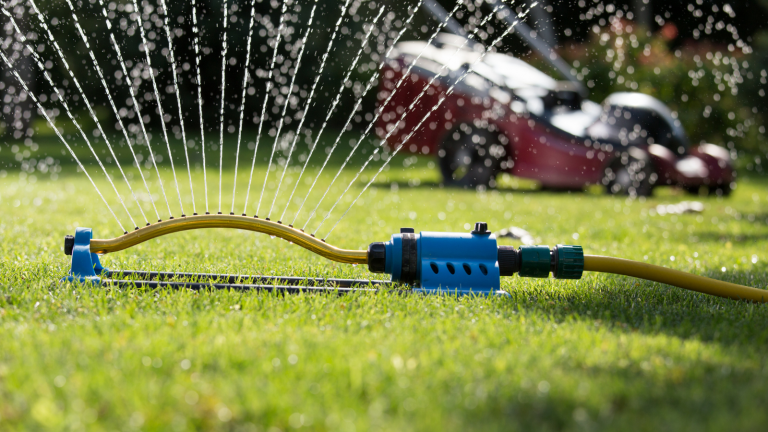
To take the guesswork out of how much water your lawn needs each week, sign up for free watering advice custom to your home’s location at WaterIsAwesome.com.
Fertilizing
Fertilizing is not so “one size fits all” as we would sometimes like for it to be. Every environment is different with its own expectations, use, history, and needs. Remember that the health of your turfgrass is heavily dependent on the soil it is being grown on. Look for a custom approach that is specifically catered to your turfgrass area. Start by testing your soil. For information on soil testing, visit the Soil, Water, and Forage Testing Laboratory website.
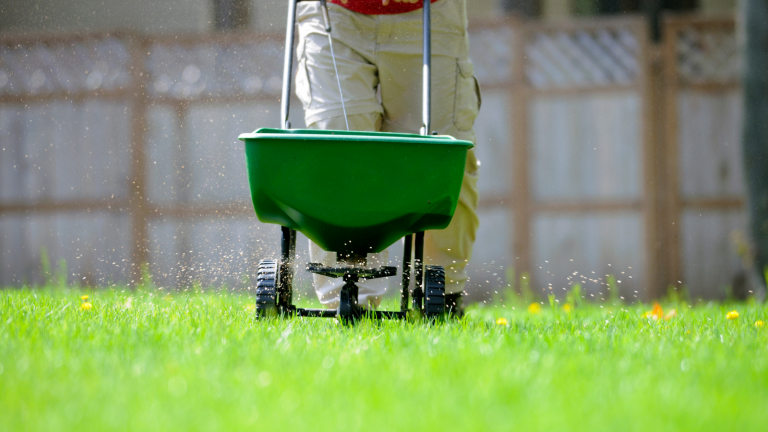
Soil tests will give you a feel for some of the characteristics of your soil that are important for growing healthy plants including soil pH, soil salinity, and the relative abundance of the major nutrients your turfgrass needs to survive. While there are approximately 18 plant essential nutrients, primarily, we focus on a select few: nitrogen, phosphorous, potassium (N-P-K) are the three primary macronutrients that are available in most fertilizer products. The analysis or grade on the fertilizer bag is indicative of the ratio of (N, P, and K). So, a product with a grade of 15-5-10 has a 3-1-2 ratio of these nutrients. The appropriate ratio will vary both based on the time of year and on the individual needs of your turfgrass system. It is important to note that while nitrogen needs are determined primarily by the species, most other nutrient requirements are best determined by the soil test.
Other elements commonly looked at by urban soil tests include calcium, magnesium, sulfur, iron, zinc, manganese, copper, boron, and sodium. Sodium testing is conducted to shed light on soil quality as opposed to plant nutritional needs. Every element, or nutrient, has a key part to play and balance is important. Too much or too little of any one essential nutrient can have a negative effect on your turfgrass and its overall wellbeing.
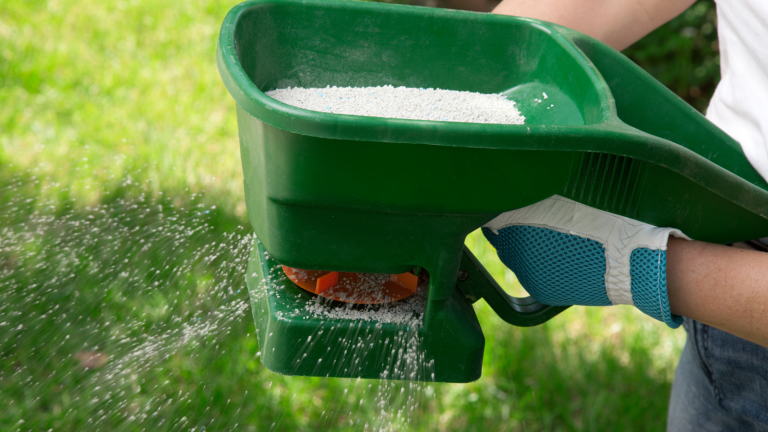
It is possible to apply fertilizers at inappropriate times. Nitrogen, in particular, should be applied only during months of active growth. As a guide, use the first and last frost dates for your part of the state. Your first fertilizer application of the year should come approximately 4 – 6 weeks after the last frost date, or once the grass has been mowed at least twice. Your last fertilizer application should go out approximately 4 – 6 weeks before your first frost date. This will minimize winter injury and disease risk. Use caution when purchasing or applying combination products such as those which combine preemergent herbicides and nitrogen fertilizers, as it is often not appropriate or beneficial to apply these types of products simultaneously in a home lawn setting.
Weeds
The best defense against weeds is healthy turfgrass. For the most effective approach to weed control, take an integrated approach. Herbicides can be great, but they are often more effective when combined with other forms of control such as preventative, cultural, and mechanical control. Some degree of preventative and cultural control can come by following the recommendations pulled from other areas of this article:
- Balanced irrigation with a uniform irrigation system to prevent localized drought or water pooling.
- Mowing at a slightly higher mowing height.
- Soil testing to follow a fertilizer and soil amendment program that optimizes conditions for healthy turfgrass.
- Avoiding soil compaction and perhaps through annual cultivation such as core aeration.
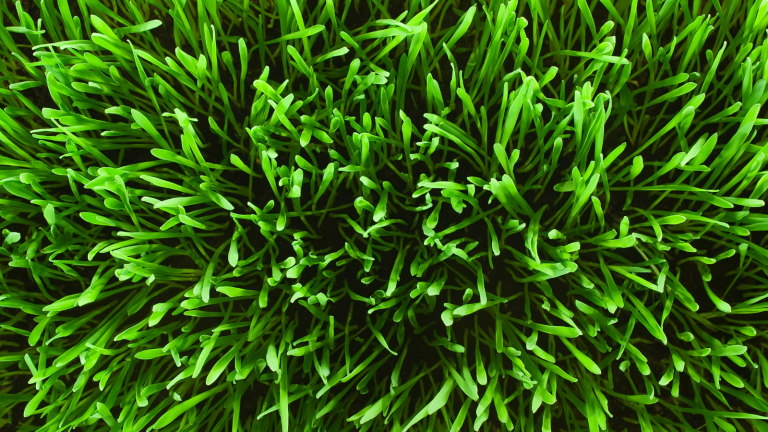
Mechanical control, or physically removing the weeds either by hand or with the assistance of gardening tools, can also be highly effective against mature, stubborn, or sparse weeds. Mowing can also be a form of mechanical control through the physical removal of seed heads and by cutting weeds down to a disadvantageous height.
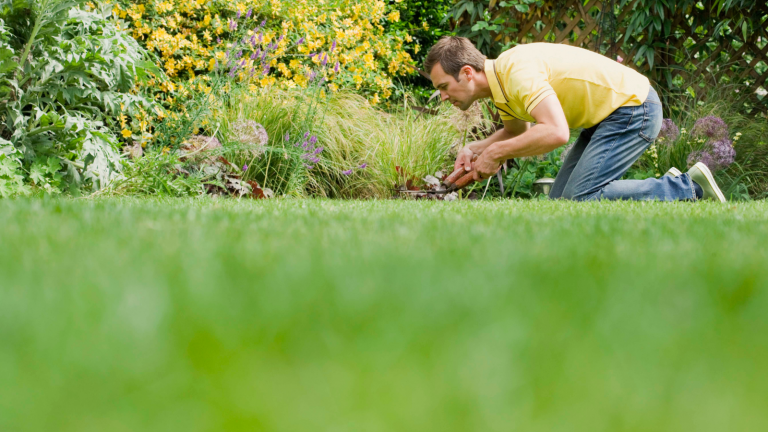
Chemical control of weeds involves the use of herbicides. Prior to purchasing any chemical control products, try to take these 3 steps:
- Identify the weed(s) you are trying to control.
- Check the product label. Ensure that the product is safe to use on your grass, and labeled to control the weed(s) you have identified.
- Check with an expert. Contact your AgriLife County Extension Agent for support.
Summertime can be a difficult time for weed control. Once weeds are mature, chemical control methods are often less effective. Additionally, once your grass is fully active for the year, the number of products appropriate for controlling grassy weeds in particular are more limited. Again, contact an expert for advice and fall back on your preventative, cultural, and mechanical control. Keep an eye out for preemergent herbicide recommendations in the fall and spring that can help prevent hard-to-control weeds.
Also, be aware that some products may be safe for use on one species of turfgrass, but not on another. For example, St. Augustine grass is often more sensitive to common herbicide ingredients such as 2,4-D and Dicamba than bermudagrass. This is why it is critical to both check and follow the label.
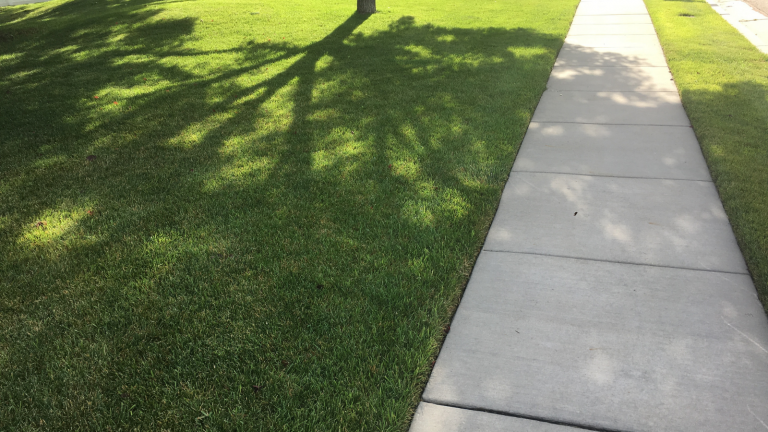
To get more details on selecting an appropriate herbicide, take a look at this Homeowner’s Guide to Herbicide Selection for Warm-Season Turfgrass Lawns.
For more detailed information on Pre-Emergence Herbicides, check out this publication.
Lawn Maintenance Calendars
All that information can be a lot to process! Download one of these calendars and know exactly when lawn maintenance needs to be done. There are separate calendars available for St. Augustine and Bermuda grass lawns.

Still want more? Check out AgriLife’s Lawn Care Tips for Summer and the publications on the AggieTurf website. Information in this guide was reprinted with permission from Texas A&M AgriLife Extension Service.

